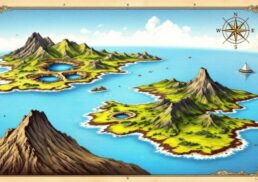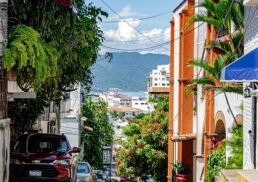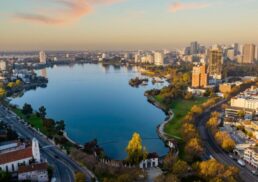West Asia, also referred to as Western Asia, includes key countries such as Saudi Arabia, Iran, Turkey, Israel, and the United Arab Emirates, which together form the country of West Asia. This article provides an overview of these countries, their geopolitical significance, and cultural diversity.
Table of Contents
Key Takeaways
West Asia serves as a strategic crossroads between Europe, Asia, and Africa, characterized by diverse cultures, landscapes, and geopolitical significance.
The region comprises a mix of GCC and non-GCC countries, each contributing to its unique political and economic landscape, with a notable reliance on oil and gas resources.
Demographically, West Asia is diverse, with a population exceeding 300 million, featuring various ethnic groups and languages, reflecting a complex social fabric shaped by historical and cultural dynamics.
Overview of Southwest Asia
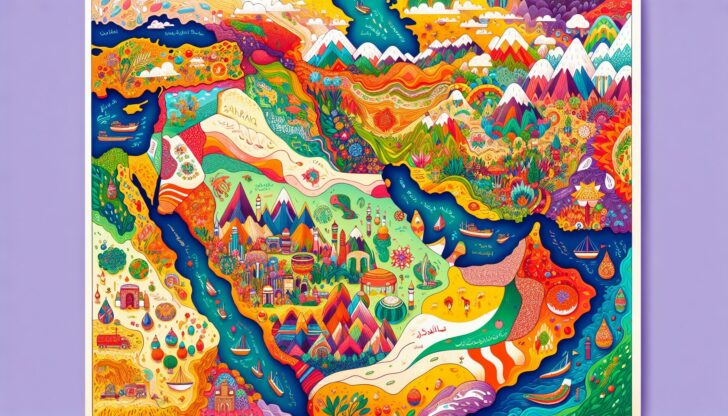
West Asia, also referred to as Western Asia or Southwest Asia, encompasses a vast and varied landscape. This region extends from the eastern shores of the Mediterranean Sea to the deserts of the Arabian Peninsula, and from the mountainous Caucasus region to the fertile lands bordering the Persian Gulf. It also includes significant bodies of water such as the Caspian Sea, which borders countries like Azerbaijan and Iran, and the Red Sea, which lies between the Arabian Peninsula and northeastern Africa.
It is a region marked by its strategic location, bridging eastern Europe, Asia, and Africa, and acting as a crossroads for trade, culture, and politics, located east of the major trade routes.
Geographical Boundaries
West Asia’s geographical boundaries are as diverse as the cultures within it. To the northeast and east, it is bordered by Central Asia and South Asia, creating a blend of cultural and political influences. The Dasht-e Kavir and Dasht-e Lut deserts serve as natural delimiters between West Asia and Balochistan and South Asia, while the Arabian Sea delineates the Arabian Peninsula to the south, emphasizing the region’s reliance on natural boundaries for its geographical identity.
These natural borders, which include vast deserts, mountain ranges, the Black Sea region, and expansive seas, play a crucial role in defining the land area of West Asia. They not only influence geographical distinctions but also impact cultural and political relationships between the regions, fostering a unique and complex regional identity.
Major Regions in West Asia
West Asia is a tapestry of major regions, each contributing to its rich cultural and economic landscape. The Arabian Peninsula, known for its vast deserts and significant oil reserves, stands out as a crucial area in the region. Anatolia, also known as Asia Minor, forms a substantial part of Turkey and serves as a historical bridge between Europe and Asia, highlighting the region’s strategic importance.
The Caucasus region, characterized by its mountainous terrain and cultural diversity, includes countries like Armenia, Azerbaijan, and Georgia. This area’s historical significance is profound, as it sits at the crossroads of Europe and Asia, influencing trade routes and historical conflicts.
Climate and Topography
The climate and topography of West Asia are as varied as its cultural landscape. Predominantly featuring arid and semi-arid climates, the region experiences significant drought occurrences, impacting agriculture and daily life. Major wind phenomena, such as the Sharqi and shamal, further influence the region’s weather patterns.
Geographically, West Asia boasts a mix of deserts, grasslands, and rangelands, alongside significant mountain ranges. The Dead Sea, located at the lowest point on Earth’s surface, and Mount Ararat, one of the tallest peaks in the region, are notable landmarks. The challenging climates and topographical features significantly impact water availability and agricultural viability, shaping the livelihoods of many.
Countries of West Asia
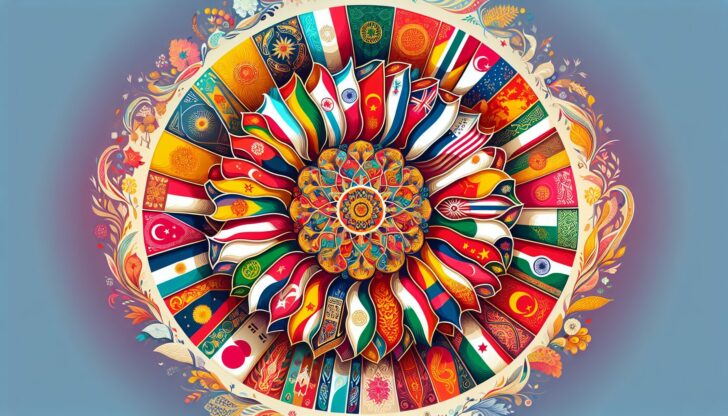
West Asia comprises a diverse array of countries, each with its unique cultural, political, and economic landscapes. This region includes members of the Gulf Cooperation Council (GCC) like Saudi Arabia and the United Arab Emirates, non-GCC countries like Turkey and Iran, and island nations such as Cyprus. Understanding the distinctions and commonalities among these nations is key to appreciating the region’s complexity.
Gulf Cooperation Council (GCC) Countries in the Arabian Peninsula
The Gulf Cooperation Council (GCC) consists of six member states:
Saudi Arabia
United Arab Emirates
Kuwait
Oman
Qatar
Bahrain (with Manama as its capital)
These countries, situated on the Arabian Peninsula, are known for their significant oil reserves and hereditary monarchies, which play a central role in their political systems.
Monarchical systems, both absolute and constitutional, are prevalent in this region, influencing governance and political stability. The GCC countries are pivotal players in the global oil market, contributing significantly to the world economy while also fostering regional cooperation and stability.
Non-GCC Countries
Non-GCC countries in West Asia include significant nations like Turkey, Iran, Iraq, Israel, Jordan, Lebanon, and the Syrian Arab Republic. These countries feature diverse political systems and cultural backgrounds, contributing to the region’s rich tapestry. The capital cities, such as Tehran in Iran and Baghdad in Iraq, are central to their respective national identities and political landscapes.
Israel, for instance, has Hebrew as its official language, with English and Arabic also widely spoken, reflecting its diverse cultural heritage. Each of these non-GCC countries plays a unique role in the broader West Asian context, influencing regional dynamics and global interactions.
Island Countries
Among the island countries in West Asia, Cyprus and Bahrain stand out due to their unique geographical and political characteristics. Cyprus, located in the eastern Mediterranean Sea, is an island country that, while geographically part of West Asia, is often politically associated with Europe. This highlights its unique position. The island has complex political dynamics, with Northern Cyprus being an unrecognized state that claims the northern part of the island.
Bahrain, another significant island country, is technically an archipelago in the Arabian Peninsula. It plays a crucial role in the region’s economic and cultural landscape. These island countries not only add to the geographical diversity of West Asia but also contribute significantly to its cultural and ecological richness.
Demographics and Population Figures
West Asia’s population is as diverse as its geography, with approximately 310 million people as of 2024. The region is characterized by significant urbanization trends, especially in countries like Turkey and Saudi Arabia, contributing to its dynamic demographic profile.
This diversity is mirrored in the range of ethnic groups and languages that populate the region.
Ethnic Groups
The ethnic landscape of West Asia includes a variety of groups, with:
Arabs being the largest
Persians
Turks
Kurds
These groups contribute to the rich cultural mosaic of the region, each with its distinct traditions, languages, and historical backgrounds.
The Kurdish population, for instance, is primarily concentrated in regions spanning Turkey, Iraq, Iran, and Syria, highlighting the transnational nature of many ethnic communities in West Asia. This diversity underscores the complex social fabric of the region, where multiple ethnicities coexist and interact.
Languages
Languages in West Asia reflect its ethnic diversity, with a mix of official and minority languages spoken across the region. For example, the official languages of Cyprus are Greek and Turkish, showcasing the island’s historical and cultural ties. Minority languages, though less dominant, play a crucial role in the cultural identity of various ethnic groups.
In Israel, Hebrew is the official language, but English and Arabic are also widely used, reflecting the country’s multicultural society. This linguistic diversity is a testament to the region’s rich cultural heritage and the interplay of historical influences.
Population Statistics
As of recent estimates, the total population of West Asia exceeds 300 million, with significant growth projected for the coming decades. By 2030, the population is expected to reach around 338 million, indicating a steady increase. The region’s population density is approximately 50.1 people per square kilometer, with urban areas hosting about 71% of the total population.
Countries like Iran, Turkey, Iraq, Saudi Arabia, and Yemen account for the majority of the population, each contributing to the region’s demographic dynamics. These statistics highlight the region’s rapid urbanization and its implications for infrastructure, resources, and social services.
Historical Significance of the Middle East
West Asia, often referred to as the Middle East, is a region steeped in history, having significantly shaped religious practices and cultural developments worldwide. From ancient civilizations to modern political shifts, West Asia’s historical narrative is rich and complex, influencing its current socio-political landscape.
Ancient Civilizations
The term ‘Fertile Crescent’ designates a crucial area in Western Asia known as the cradle of early civilizations. Mesopotamia, situated between the Tigris and Euphrates rivers, is recognized for being the birthplace of writing and urbanization, marking significant advancements in human history.
Sumer, one of the earliest known civilizations, emerged in this region and is credited with the invention of the wheel and cuneiform writing. These ancient civilizations laid the foundations for many aspects of modern society, from agriculture to governance.
Modern History
The modern history of West Asia is marked by significant geopolitical shifts. Cyprus, strategically located at the crossroads of Europe, Asia, and Africa, exemplifies the region’s geopolitical importance. The 19th century saw European colonial interests driving archaeological efforts in ancient Western Asia, reshaping the scholarly perspective on the region’s history.
The mid-20th century brought independence to many West Asian nations from European powers, fostering new political and cultural identities. The contemporary geopolitical use of ‘Western Asia’ began in the mid-1960s, reflecting the evolving understanding of the region.
Economy and Resources
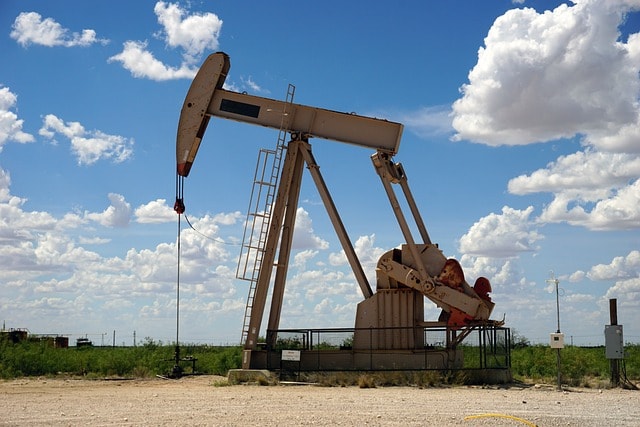
West Asia’s economy is heavily influenced by its abundant natural resources, particularly oil and gas. The region’s economic landscape is shaped by the petroleum industry, which forms the backbone of many countries’ economies.
However, other sectors such as agriculture and services are also vital, contributing to food security and employment.
Petroleum Industry
The petroleum industry is the cornerstone of West Asia’s economy, with the Gulf Cooperation Council (GCC) countries holding over 30% of the world’s confirmed crude oil reserves. Saudi Arabia, the largest oil producer in the Gulf, controls 17.2% of the world’s proven oil reserves, while Qatar is a leading source of natural gas with 13.1% of global proven gas reserves.
The Arabian Peninsula, known for its vast deserts and significant oil reserves, plays a crucial role in the global energy market. The petroleum industry not only drives economic growth in these countries but also influences various sectors, including employment, infrastructure development, and international relations.
Learn more, checkout How the Oil and Gas Industry Works.
Other Industries
Beyond petroleum, West Asia is diversifying its economic strategies by investing in agriculture and the services sector. Agriculture remains a vital part of the economy, particularly in rural areas, where it ensures food security and provides employment. The services sector, encompassing tourism, finance, and technology, is also becoming a major driver of economic growth in the region.
Countries in the Gulf, for instance, are focusing on diversifying investments and building relations with major global powers to reduce their dependence on oil revenues. This trend towards economic diversification is crucial for sustainable development and long-term economic stability.
Economic Cooperation
Regional economic cooperation is essential for enhancing trade, investment, and overall economic growth in West Asia. The Gulf Cooperation Council (GCC) was established to promote economic integration and political cooperation among its member states. By fostering collaboration, the GCC aims to bolster the economies of its member states, increase economic diversification, and improve regional stability.
Religion and Culture
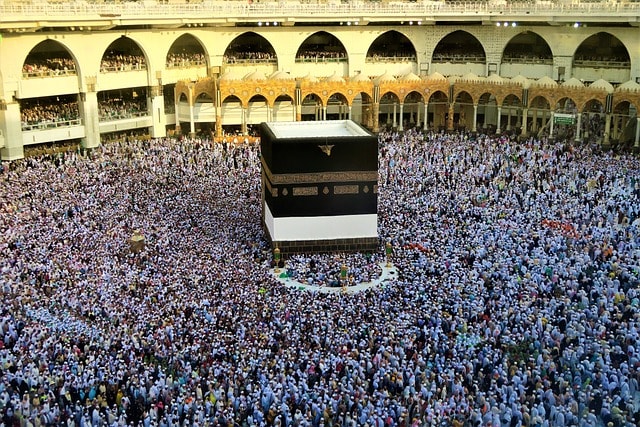
West Asia is the birthplace of several major world religions, including Islam, Christianity, Judaism, and the Druze faith. The region’s cultural landscape is deeply intertwined with its religious heritage, influencing various aspects of daily life, from festivals and traditions to art and architecture.
Major Religions
Islam is the predominant faith in West Asia, with significant populations practicing both Sunni and Shia sects. The region is also home to substantial communities of Christians and Jews, reflecting its historical role as the origin of these major religions.
Judaism and Christianity, alongside Islam, have left an indelible mark on the cultural and social fabric of West Asia. Religious sites, festivals, and practices continue to play a crucial role in the daily lives of many people in the region, fostering a rich and diverse cultural heritage.
Cultural Practices
Cultural expressions in West Asia are as diverse as its population. Traditional music, dance, and unique dress styles reflect the region’s rich cultural heritage. For instance, Nowruz, marking the Persian New Year, is celebrated across various countries with unique local traditions.
Hospitality is a significant aspect of many West Asian cultures, where sharing meals and offering refreshments is a customary practice. These cultural practices, deeply rooted in the region’s history, continue to shape social interactions and community life, highlighting the importance of cultural continuity and tradition.
Key Cities and Capitals
West Asia is home to several key cities and capitals that serve as major hubs of economic, political, and cultural activities, including the west bank. Cities like Riyadh, Tehran, Istanbul, and Beirut are pivotal in shaping the region’s landscape, each with its unique historical and contemporary significance.
Proclaimed Capitals
Jerusalem is the proclaimed capital of Israel, though its status is internationally disputed, with most embassies located in Tel Aviv. Despite its contentious status, Jerusalem serves as the legislative center of Israel, housing key government institutions.
Major Urban Centers
Major urban centers in West Asia play crucial roles in the region’s development. Riyadh, the capital of Saudi Arabia, is known for its rapid economic growth and development, largely driven by the petroleum industry. Tehran, as the capital of Iran, is central to the country’s political affairs and has a rich historical context dating back to ancient civilizations.
Istanbul, straddling Europe and Asia, is renowned for its historical significance and diverse cultural tapestry, while Beirut is celebrated for its vibrant cultural scene and as a center for finance and commerce. These cities not only drive economic and political activities but also enrich the cultural heritage of West Asia.
Political Landscape
The political landscape of West Asia is diverse, characterized by various forms of governance and international relations. From hereditary monarchies to presidential republics, the region’s political dynamics are complex and influential on a global scale.
Forms of Government
West Asia features a variety of governance structures, including presidential republics where leaders are elected directly by the populace. These republics often exhibit varying degrees of political freedom, with some practicing democratic governance and others facing authoritarian rule.
The political diversity in West Asia reflects its historical and cultural complexities, with each country navigating its unique path towards governance and political stability. This diversity underscores the region’s multifaceted political landscape.
International Relations
West Asian countries play crucial roles in international organizations, with many being active members of the United Nations, influencing regional and global policies. These countries often engage with international organizations to address regional stability and security issues, balancing local interests with global influences. The interactions between West Asia and southern Europe are particularly significant in understanding the geopolitical dynamics of the region.
The region’s international relations are shaped by complex historical alliances and regional tensions. For instance, Jerusalem’s designation as Israel’s capital is contested internationally, with many nations favoring Tel Aviv for their embassies due to the city’s disputed status.
Recent trends also show enhanced economic ties between Gulf nations and major global powers like China, particularly through infrastructure initiatives.
Maps and Visual Aids
Maps of West Asia are invaluable for understanding the region’s intricate borders and strategic position between Europe, Africa, and Asia. Interactive maps can provide detailed visual insights into the geographical relationships and territories of West Asian countries, enhancing our comprehension of this complex region.
Summary
In summary, West Asia is a region rich in history, culture, and economic potential. From its diverse ethnic groups and languages to its significant historical sites and modern political dynamics, West Asia offers a unique perspective on global affairs. The region’s strategic location, natural resources, and cultural heritage make it a pivotal player in the international arena.
As we conclude this comprehensive guide, it is evident that understanding West Asia requires a multifaceted approach, considering its geographical, historical, economic, and cultural dimensions. By appreciating these aspects, we can better grasp the complexities and contributions of this vibrant region to the world.
Frequently Asked Questions
What is the significance of the term ‘West Asia’?
The term ‘West Asia’ is significant as it modernizes the understanding of the region, moving away from outdated labels like ‘Near East’ and ‘Middle East’ to better encapsulate its historical and cultural context. This shift highlights the importance of acknowledging the diverse narratives of the area.
Which countries are part of the Gulf Cooperation Council (GCC)?
The Gulf Cooperation Council (GCC) comprises Saudi Arabia, the United Arab Emirates, Kuwait, Oman, Qatar, and Bahrain.
What are the major ethnic groups in West Asia?
The major ethnic groups in West Asia include Arabs, Persians, Turks, and Kurds, each playing a significant role in the region’s diverse cultural landscape.
How does the petroleum industry impact West Asia’s economy?
The petroleum industry is pivotal for West Asia’s economy, underpinning growth and impacting multiple sectors due to the substantial oil reserves in GCC countries. This dependence on oil has shaped the region’s economic landscape significantly.
What are some of the key historical sites in West Asia?
Key historical sites in West Asia include Mesopotamia, the Fertile Crescent, and ancient cities such as Jerusalem and Istanbul, which have significantly influenced the region’s history. These sites are essential for understanding the cultural and historical development of West Asia.


